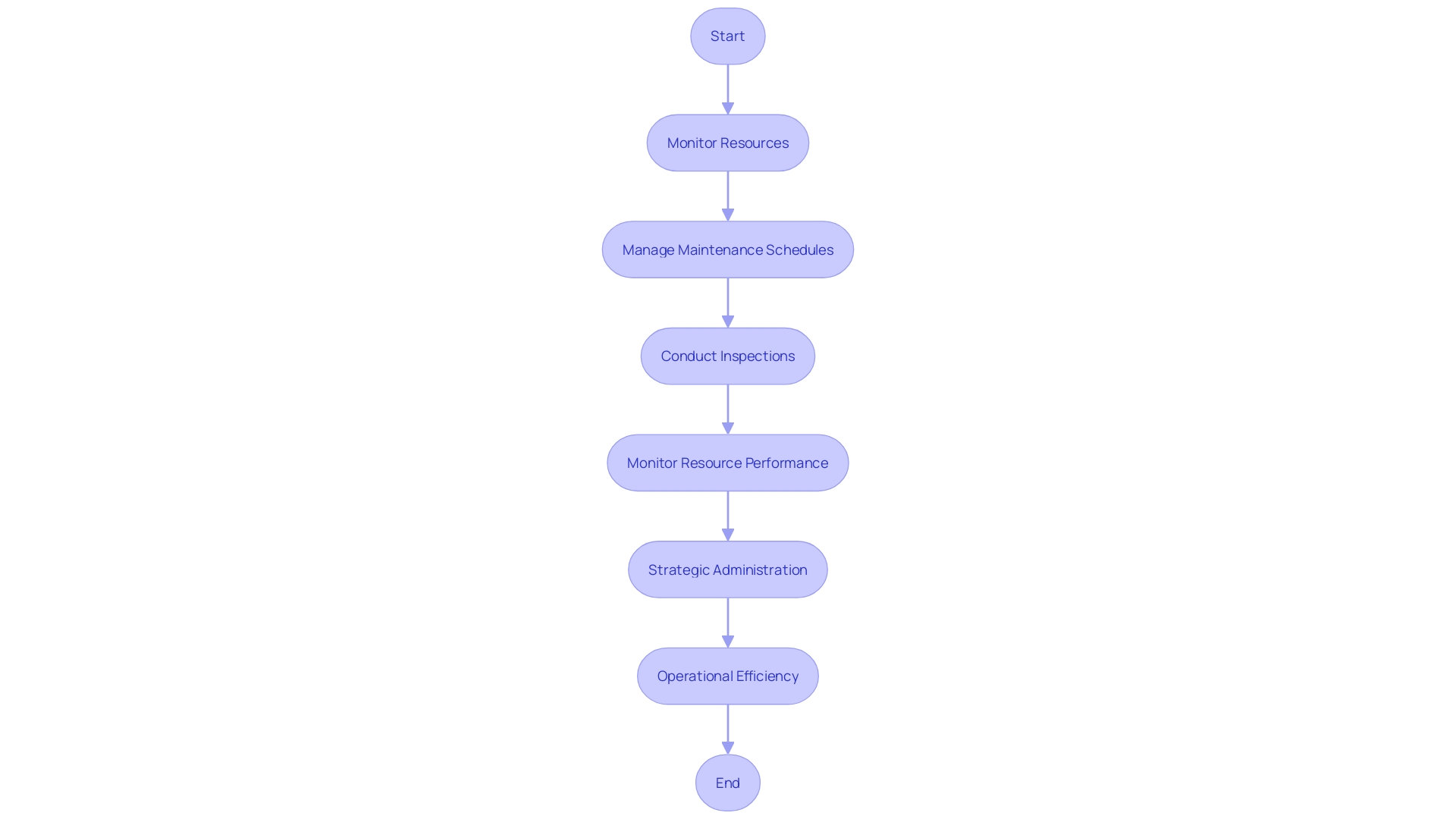Introduction
In the dynamic sphere of petroleum land services, professionals face numerous challenges that must be overcome to ensure efficiency and operational success. These challenges include the complex process of land acquisition involving multiple stakeholders, the need for accurate and current title research, and the unpredictable nature of the oil and gas sector. However, the industry is embracing technology to enhance efficiency and address these challenges.
AI-powered title research software, Geographic Information System (GIS) mapping, and advanced data processing tools are revolutionizing the industry. Additionally, effective asset management strategies and the implementation of Enterprise Asset Management (EAM) systems are crucial for optimizing operational performance and ensuring regulatory compliance. By adopting innovative strategies and collaborative efforts, petroleum land services can navigate complexities and drive progress in the exploration and extraction of hydrocarbons.
Challenges in Petroleum Land Services
In the dynamic sphere of petroleum services, professionals are tasked with the critical role of facilitating the exploration and production of oil and gas resources. These endeavors involve intricate challenges that must be addressed to enhance efficiency and operational success. A significant obstacle is the intricate process of property acquisition, where stakeholders such as landowners, governmental entities, and regulatory bodies intersect. The endeavor demands proficiency and meticulous attention to detail, given the time-sensitive and complex nature of legal and regulatory compliance.
The accuracy and currency of title research are also paramount, ensuring property rights are secured and legal risks are mitigated. This requires a significant investment of time and resources to review and analyze copious documents thoroughly. Moreover, the unpredictability of the oil and gas sector, characterized by volatile prices, evolving environmental mandates, and shifting market trends, requires a flexible and adaptive approach from service providers.
In addressing these challenges, the industry has shifted from reliance on traditional geological surveys and educated estimations to adopting modern technologies like 3D seismic imaging and advanced drilling techniques. This data-driven paradigm has significantly improved the exploration success rate. Additionally, the integration of automation and digital technologies, including robotics, AI, and IoT devices, has been instrumental in optimizing drilling, monitoring, and maintenance processes, leading to enhanced efficiency and safety.
These advancements underscore the importance of innovative strategies and collaborative efforts, particularly in light of the increasing demand for renewable energy sources and the associated need for transmission lines to support and sustain such projects. As the industry continues to evolve, the role of petroleum services remains pivotal in navigating the complexities and driving progress in the exploration and extraction of hydrocarbons.

The Role of Technology in Enhancing Efficiency
The incorporation of advanced technology into petroleum services is revolutionizing the industry, bringing unparalleled levels of efficiency and precision. Leading this transformation, AI-driven title investigation software is at the forefront, using artificial intelligence and machine learning to analyze vast information, expediting the title investigation process which is vital in the acquisition and control of property rights. By automating tasks that were once manually intensive, these tools not only save time but also enhance the accuracy of the findings, thus ensuring more reliable decision-making.
In addition to AI, Geographic Information System (GIS) mapping has become an indispensable tool for visualizing spatial data. It outlines boundaries of property, details of ownership, and infrastructure, which is crucial for planning routes and project administration. The incorporation of GIS into everyday operations has enabled service providers to make more strategic decisions, ultimately optimizing project outcomes.
Efficient information management is another crucial element facilitated by technological advancements. The petroleum sector that deals with land services is flooded with substantial amounts of intricate information such as records related to land, agreements for lease, and reports related to the environment. Advanced data processing tools are essential for organizing and interpreting this information to extract actionable insights, which is vital for informed decision-making and the enhancement of operational efficiency.
Embracing these technological solutions is not just a matter of staying current; it is a strategic move that can lead to considerable cost reductions and bolster the overall efficacy of oil and gas projects. As the industry continues to evolve, the adoption of such innovative tools will be crucial in shaping the future of petroleum services.
Asset Management Strategies for Efficiency
In the fiercely competitive domain of petroleum services, effectively managing resources is the foundation of operational efficiency. Strategic administration of land rights, leases, and infrastructure is not only about maximizing their use but also about reducing downtime and operational expenses. An integrated property management system is at the core of this strategy. Such systems provide a consolidated platform for monitoring resources throughout their entire lifespan, allowing providers to manage maintenance schedules, conduct inspections, and monitor resource performance seamlessly.
Proactive maintenance strategies are crucial, incorporating regular inspections, preventative maintenance, and timely repairs to avert unplanned downtime and prolong life of the property. This forward-thinking approach ensures the uninterrupted availability of critical infrastructure, bolstering operational efficiency. Additionally, the analysis of data and preemptive upkeep are altering the way providers handle resources by enabling them to utilize past data and algorithms to anticipate possible breakdowns and organize maintenance as needed. This approach reduces the risk of failure, improves equipment reliability, and strengthens overall operational productivity.
Industry leaders, such as Saipem, underscore the importance of harnessing individual potential and leadership to engineer sustainable futures and create value. In the realm of resource administration, this translates into sustainable practices that not only serve stakeholders but also the environment and governance structures. With transparency being a critical aspect of the industry, as emphasized by Argus with their global price assessments and market intelligence, leveraging such insights for business planning is key.
The integration of digital technology, as highlighted by industry experts, is essential for companies to remain relevant and satisfy stakeholders. GPS technology, for instance, enhances process efficiencies, which in turn can lead to increased revenue and customer satisfaction. Efficient governance practices, which include well-defined responsibilities, guidelines, and processes for handling information, are also crucial in this procedure.
Through the collective wisdom of local governments, as shared by Kara Kennedy of Woodlands County, the culture of asset management and knowledge sharing can significantly improve asset awareness and workplace practices. By drawing on the most comprehensive data and expertise, as provided by Deloitte's IndustryAdvantage™, companies can stay ahead of the curve, ready to meet the industry's future demands.

Benefits of Implementing Enterprise Asset Management (EAM)
Petroleum land services are increasingly leveraging Enterprise Asset Management (EAM) systems to enhance efficiency and ensure regulatory compliance. These sophisticated systems provide a centralized database for information about resources, which is vital for making well-informed decisions regarding resource utilization and maintenance planning. The deployment of EAM systems not only optimizes maintenance processes but also greatly diminishes downtimes and enhances operational performance through automation and effective monitoring of work orders and inventory control.
The role of EAM in safety enhancement is noteworthy. As emphasized by industry experts, EAM's contribution to the elimination of safety incidents within industrial environments is invaluable. The organized management of an organization's physical resources through EAM software involves maintenance, scheduling, and performance monitoring, all of which play a substantial part in ensuring a safe working environment.
Furthermore, EAM systems are instrumental in maintaining compliance with the ever-evolving environmental and safety regulations. By meticulously tracking and documenting compliance activities, petroleum land service providers can confidently demonstrate adherence to regulatory requirements, effectively reducing legal risks.
Advancements in technology, such as Optical Character Recognition (OCR) and machine learning, have further refined the capabilities of EAM systems. OCR technology, for example, allows the retrieval of crucial details from tags related to resources, even in cases where they are worn or impaired, getting rid of the requirement for manual input of information and guaranteeing accuracy of information. Machine learning algorithms enhance the reliability and precision of information related to valuable resources, which is essential for industries that heavily rely on such resources.
High-quality data, along with integrated analytics and detailed industry tracking, empower land service providers to stay ahead of the competition by maximizing opportunities. The advantages of these technologies are evident in successful case studies where organizations have utilized digital technology to transform their resource management and sustain their operations. Such strategic investments in EAM systems are proving to be transformative, offering an end-to-end digital offering that accelerates and informs integrity-management decisions, ultimately leading to enhanced operational efficiency and asset value maximization.
Conclusion
In conclusion, the petroleum land services industry is embracing technology to overcome challenges and enhance efficiency. AI-powered title research software, GIS mapping, and advanced data processing tools are revolutionizing the industry. These technologies streamline land acquisition, improve decision-making, and optimize project outcomes.
Effective asset management strategies and the implementation of EAM systems are crucial for operational performance and regulatory compliance. These systems provide centralized asset information, streamline maintenance, and enhance safety. OCR and machine learning advancements further refine EAM capabilities.
By adopting innovative strategies and collaborative efforts, petroleum land services can navigate complexities and drive progress. Technology integration and effective asset management strategies bring unprecedented efficiency and precision. Investments in technology and strategic management offer enhanced operational efficiency and asset value maximization.
As the industry evolves, petroleum land services play a pivotal role. Leveraging technology and embracing collaboration, the industry can overcome challenges and thrive. With the right strategies and tools, petroleum land services can navigate complexities and drive progress in the exploration and extraction of hydrocarbons.
Discover the power of AI and GIS mapping in revolutionizing the petroleum land services industry!




